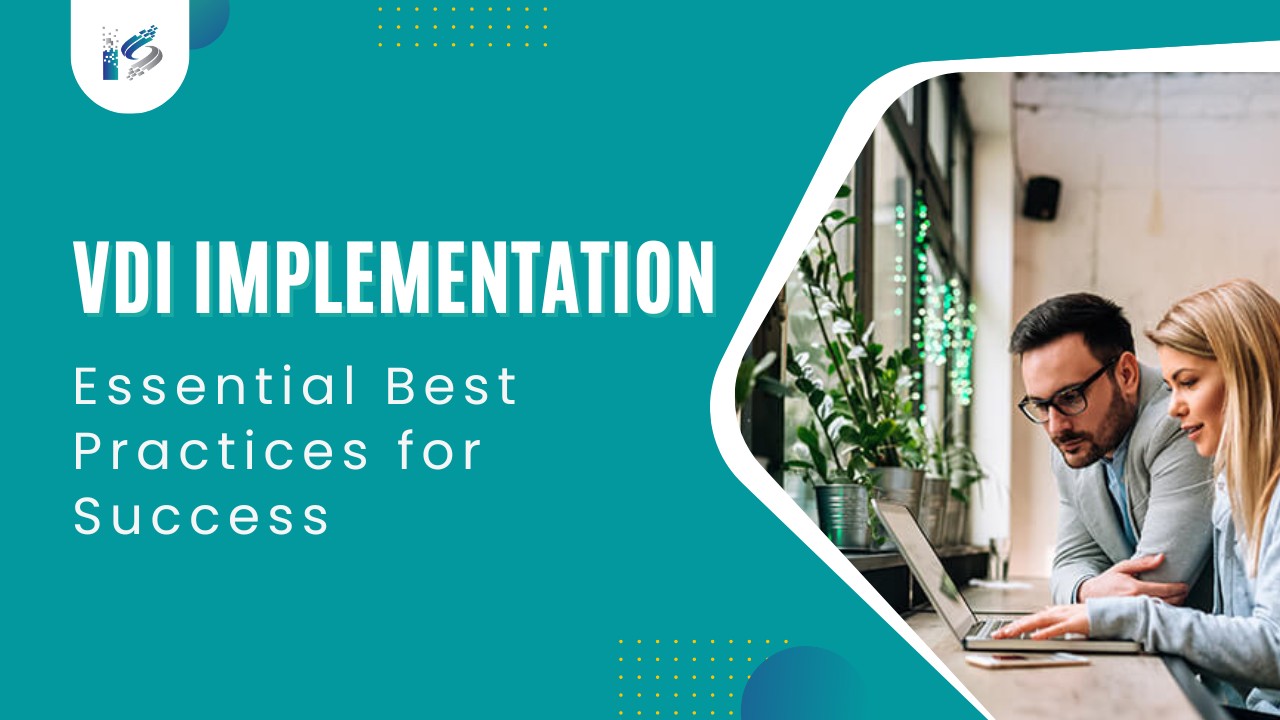Virtual Desktop Infrastructure (VDI) has become increasingly popular in the business world, offering numerous benefits such as centralized management, improved security, and enhanced user experience. However, implementing VDI successfully requires careful planning and adherence to best practices. In this article, we will explore the top seven best practices to follow during a VDI implementation, ensuring a smooth and successful deployment.
Understanding VDI Implementation
Before diving into best practices, it’s essential to understand the basics of VDI. VDI involves hosting desktop environments on a central server and delivering them to end-users over a network. This approach enables organizations to provide a consistent and secure desktop experience across multiple devices. By implementing VDI, businesses can enhance productivity, simplify management, and reduce costs.
Pre-Implementation Preparation
To lay the foundation for a successful VDI implementation, thorough preparation is crucial. This involves assessing business needs and goals, analyzing infrastructure requirements, and conducting a feasibility study. By understanding the unique requirements of your organization, you can tailor the VDI solution accordingly and ensure alignment with business objectives.
Designing the VDI Environment
Designing a well-planned VDI environment is essential for optimal performance and scalability. Start by selecting the right VDI solution that aligns with your organization’s requirements. Consider factors such as user capacity, application compatibility, and management capabilities. Additionally, evaluate network and storage considerations, and choose hardware and software components that can support your VDI environment effectively.
Planning for Scalability and Performance
VDI implementations should be scalable to accommodate future growth and capable of delivering excellent performance to end-users. Evaluate scalability requirements by considering factors such as user load, application demand, and storage needs. Optimizing resources, implementing load balancing strategies, and leveraging technologies like caching and deduplication can help maximize performance and ensure a seamless user experience.
Ensuring Security and Data Protection
Security should be a top priority when implementing VDI. By implementing strong access controls, you can ensure that only authorized users can access the virtual desktop environment. Implement encryption techniques to secure data at rest and in transit. Establish robust disaster recovery and backup mechanisms to protect critical data and ensure business continuity in the event of an unforeseen incident.
User Experience Enhancement
To drive user adoption and satisfaction, it’s crucial to focus on enhancing the user experience in the virtual desktop environment. Customize the virtual desktop experience to align with users’ preferences and requirements. Ensure seamless application delivery, considering factors such as application compatibility, performance optimization, and remote access capabilities. Establish monitoring and troubleshooting mechanisms to promptly address any user issues that may arise.
Testing and Piloting
Before deploying VDI on a large scale, thorough testing and piloting are essential. Testing helps identify and address any potential issues or bottlenecks. Conduct pilot projects with a subset of users to gain real-world insights and gather feedback. Use this feedback to make necessary adjustments and ensure that the VDI environment is ready for full-scale deployment.
Deployment and Rollout Strategy
A well-defined deployment strategy is crucial for a successful VDI implementation. Plan the deployment process step-by-step, ensuring minimal disruption to end-users. Communicate the changes effectively to users, emphasizing the benefits and addressing any concerns they may have. Provide adequate training and support to facilitate user adoption and ensure a smooth transition to the new virtual desktop environment. Continuously monitor and manage the rollout to address any issues that may arise promptly.
Performance Monitoring and Optimization
Implementing VDI is not a one-time task; it requires ongoing monitoring and optimization to ensure optimal performance. Utilize monitoring tools and techniques to track performance metrics such as CPU usage, memory utilization, and network latency. Analyze these metrics to identify areas for improvement and make necessary adjustments. Proactive maintenance, such as regular patching and updates, can help optimize the VDI environment and ensure it remains secure and efficient.
Support and Maintenance
Establishing a robust support framework is crucial for addressing user issues and maintaining the VDI environment effectively. Provide users with a clear channel to report problems and offer timely support. Assign dedicated IT resources to handle VDI-related queries and troubleshoot common issues. Regularly update and patch the VDI infrastructure to ensure it remains secure and up-to-date.
Change Management and User Adoption
Introducing VDI involves significant changes for end-users, making change management a critical aspect of successful implementation. Communicate the changes effectively, highlighting the benefits and addressing any concerns or resistance. Involve end-users in the decision-making process and provide comprehensive training to ensure they are comfortable with the new virtual desktop environment. Offer ongoing user support and actively encourage adoption to drive the full benefits of VDI.
Cost Management and ROI Analysis
While VDI offers numerous advantages, it’s important to manage costs effectively and analyze the return on investment (ROI). Assess the total cost of ownership (TCO) by considering factors such as hardware, software licensing, infrastructure, and ongoing maintenance. Evaluate the benefits VDI brings in terms of productivity gains, reduced support costs, and increased security. Identify cost-saving opportunities such as server consolidation, energy efficiency measures, and leveraging cloud-based solutions.
Compliance and Regulatory Considerations
Different industries have specific compliance and regulatory requirements that must be considered during VDI implementation. Ensure that the VDI environment aligns with these requirements and adheres to industry-specific standards. Pay particular attention to data privacy and protection obligations, ensuring that sensitive information is adequately secured and access is restricted to authorized personnel only.
Summary and Key Takeaways
Mastering VDI implementation requires following a set of best practices to ensure success. By understanding the fundamentals of VDI, adequately preparing, designing a scalable environment, focusing on security and user experience, and implementing proper testing, deployment, and maintenance strategies, organizations can unlock the full potential of VDI. Additionally, considering cost management, compliance, and monitoring ROI contribute to a well-rounded VDI implementation strategy.
Need help on maintaining Azure Security Center Secure Score of Clients?
Our experts can help you on all kinds of works on Azure Security Center.
Conclusion
Implementing VDI can revolutionize the way organizations manage and deliver desktop environments. By following these seven essential best practices, organizations can maximize the benefits of VDI while ensuring a smooth and successful implementation. From thorough preparation and designing a scalable environment to prioritizing security, user experience, and ongoing maintenance, each step plays a crucial role in achieving VDI success.
Remember, VDI is not just a technology deployment; it is a transformative initiative that requires careful planning, user engagement, and continuous evaluation. By adhering to these best practices, organizations can navigate the complexities of VDI implementation with confidence and reap the rewards of a centralized, secure, and efficient virtual desktop infrastructure.
We hope you found this article informative and helpful in your VDI implementation journey. If you have any further questions or need assistance, feel free to reach out to our team.
FAQs
VDI stands for Virtual Desktop Infrastructure, and it is important as it provides centralized management, improved security, and enhanced user experience.
Consider factors such as user capacity, application compatibility, management capabilities, and align the solution with your organization's specific requirements.
Implement strong access controls, encryption techniques for data security, and establish disaster recovery and backup mechanisms.
Customize the virtual desktop experience, ensure seamless application delivery, and establish monitoring and troubleshooting mechanisms.
Common challenges include user resistance and disruption. Address them by effective change management, communication, and providing comprehensive user training and support.
Assess the total cost of ownership (TCO) and compare it to the productivity gains, reduced support costs, and increased security brought by VDI.
Understand industry-specific compliance requirements and ensure that your VDI implementation aligns with the relevant regulations. Pay attention to data privacy and protection obligations to maintain compliance.








